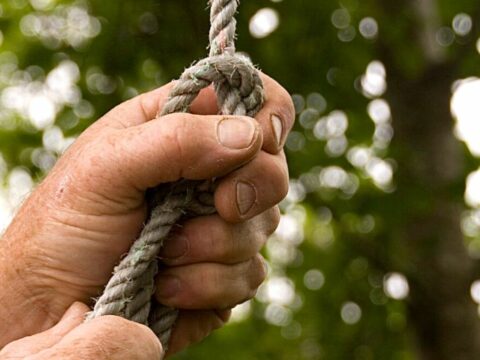Picking the best type of rope to practice making knots is a tricky choice to make. It determines your probability of surviving in emergencies.
Knot tying is an art. It is of utmost importance and is used at pretty much every stage and level of camping, climbing, etc.
So appropriate selection of rope can facilitate the best practice of tying knots and keep you on the safer side of things.
Table of Contents
Best Rope for Practicing Knots?
Choosing a rope for practicing knots depends on many factors such as the physical and technical characteristics of the rope and the type of knot. But, among all the ropes available, nylon rope is best for practicing knots because of its unique stretching ability.
6 Best Types of Ropes for Practicing Knots
Practicing knots with these ropes depends on the individual characteristics of the ropes.
1. Cotton Rope
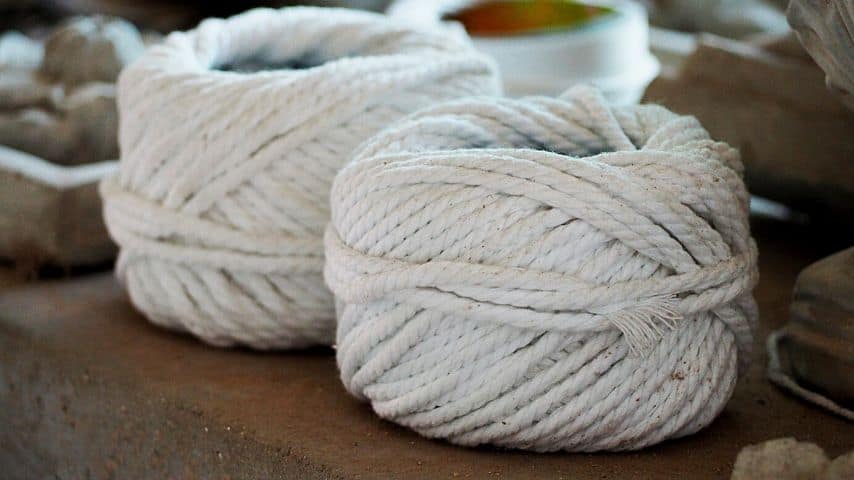
Aside from being the most common, cotton rope is also the most conveniently available rope.
Its soft twisted and braided texture is appropriate for all sorts of knotting, crafting, and binding.
Its durability depends upon its tensile strength.
2. Jute Rope
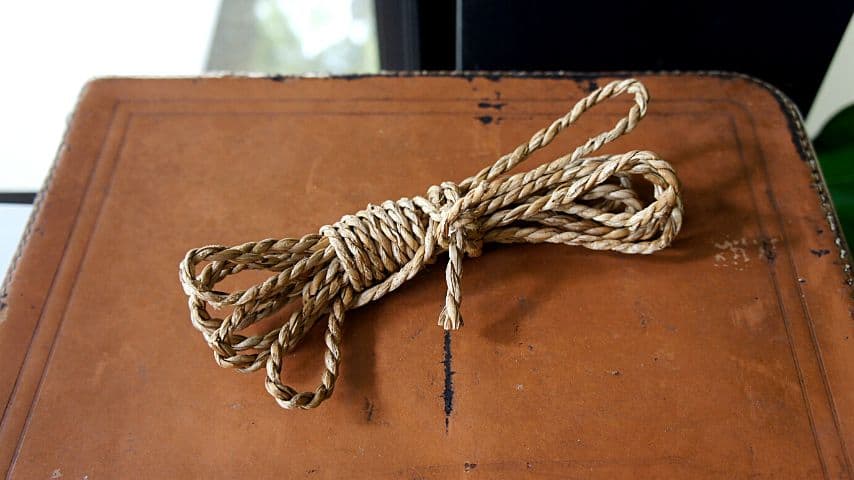
It can be termed a DIY rope. It is commonly used for covering vine bottles or glasses.
Its use is primarily linked with crafting and decorating.
Jute ropes are not much expensive and are usually biodegradable and compostable.
3. Leaded Polyester Rope
Leaded Polyester Rope is made up of combining polypropylene and polyethylene.
It is a more robust and tougher rope than any other regular rope.
It’s mainly used for commercial fishing purposes.
4. Manila Rope
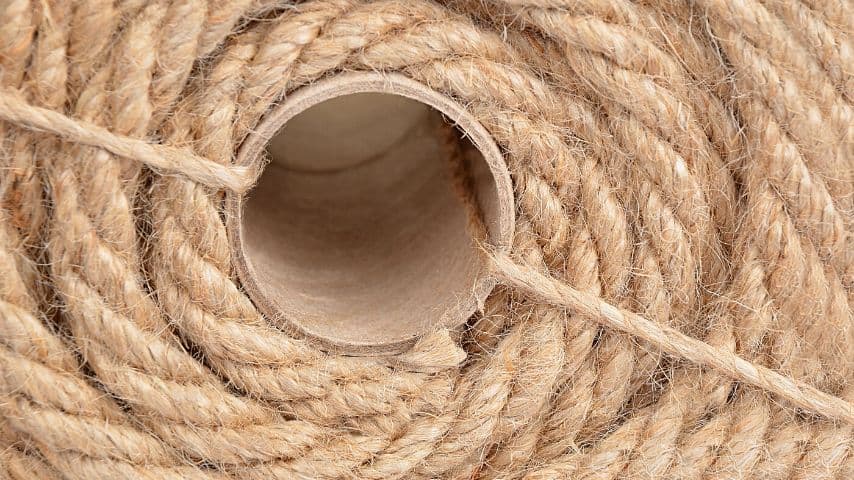
Manila rope has various applications in its uses. They are used for making handicrafts.
They are also used in the weaving of fishing nets.
It is a strong rope, but it usually shrinks from its actual size.
5. Natural Hemp Rope
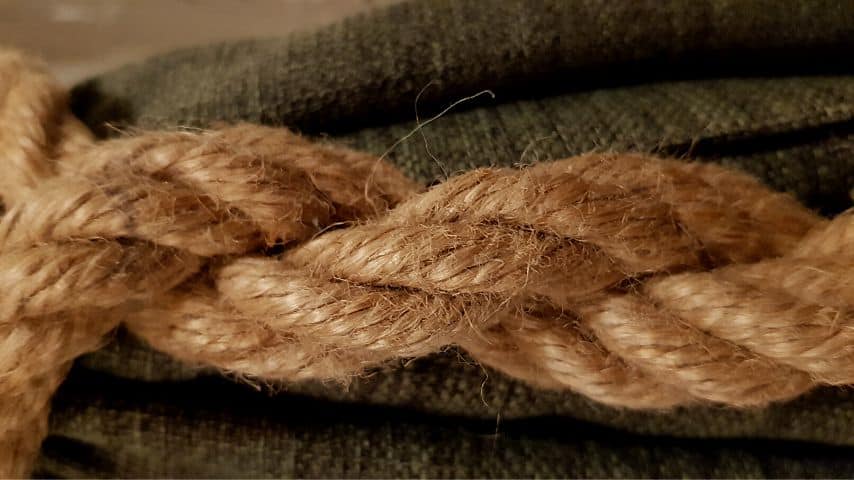
Hemp rope is used for climbing, shipping, and weight-loading. Hemp rope features a high tensile strength.
It has been durable for years because of its pure strength and non-degradable properties.
6. Nylon Rope
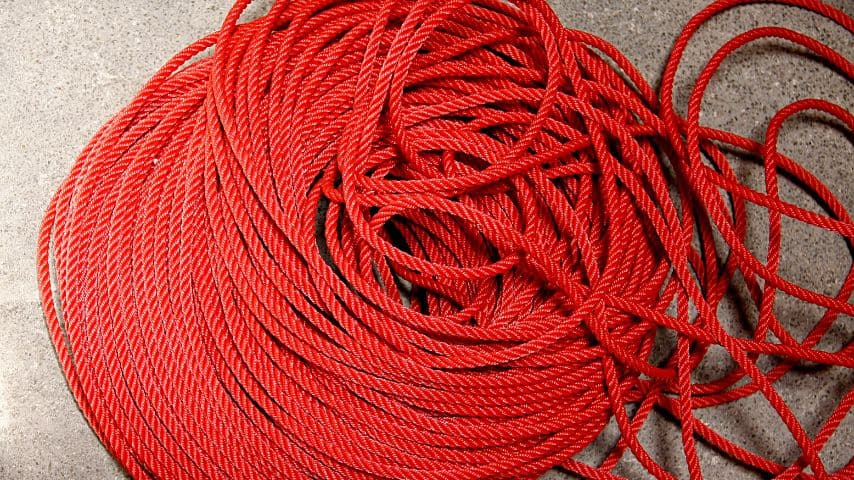
Nylon ropes are from the synthetic polymers family and possess a unique stretching quality.
It is primarily used for industrial applications such as lifting or towing.
These ropes are far more potent than any other natural fibers.
Nylon rope loses its strength when it gets wet.
7. Polyester Rope
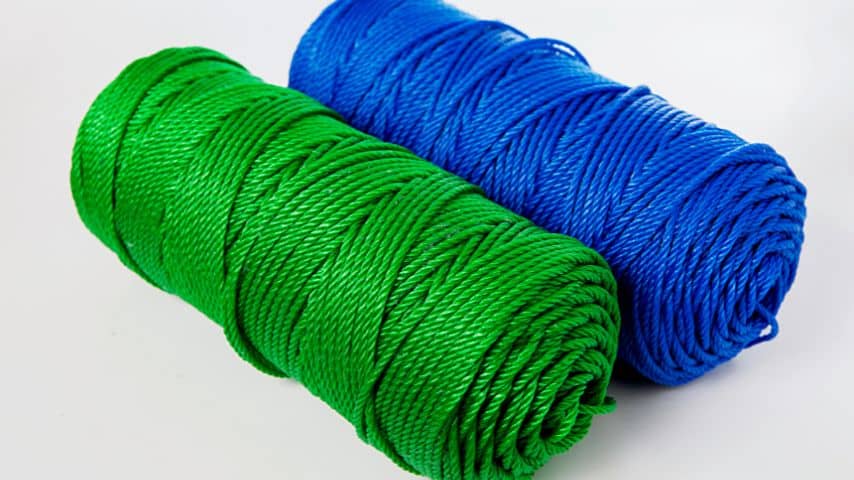
Polyester ropes are mainly used for boating and yachting purposes. They are similar to nylon ropes in terms of water resistance.
Polyester rope is comparatively less stretchable than nylon ropes.
8. Polyethylene Rope
Polyethylene ropes are commonly used for fishing and construction purposes.
They are used merely in marine activities because of their toughness.
These ropes can easily float on water surfaces.
6 Types of Knots
When selecting the kind of rope, one has to be aware of the purpose they are buying that rope for.
The following details will briefly overview various knots generally being practiced.
1. Square Knot
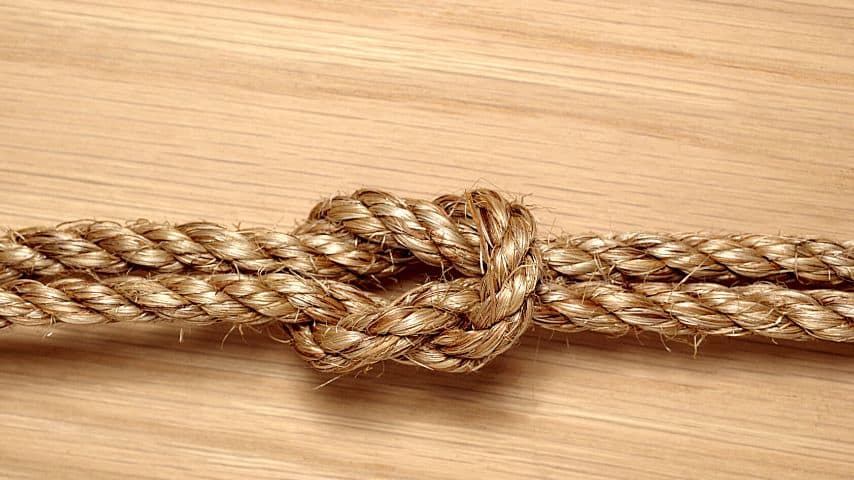
The square knot is the primary type of knot. This knot is usually used when you package bundles and packets.
It’s also used in first-aid for tying bandages and crapes.
2. Bowline
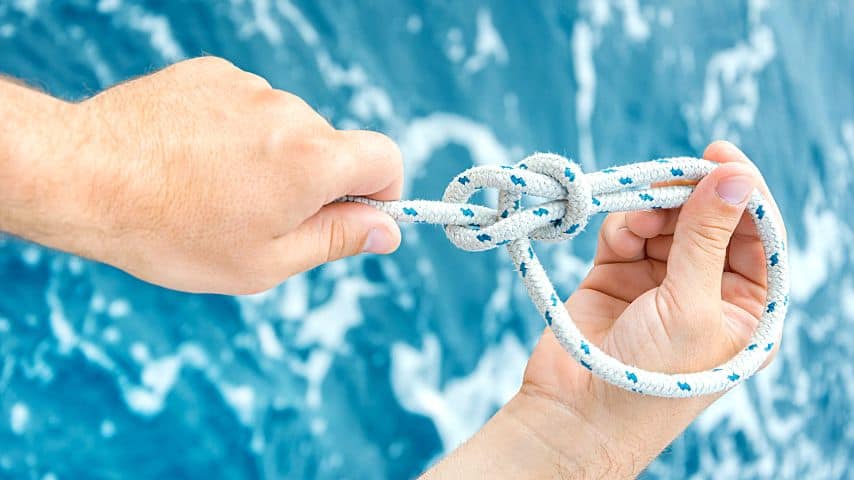
A bowline, in other words, is an emergency knot. Hence, it’s known as the king of all the knots.
It is helpful in unforeseen situations. It is an open-ended knot used in rescue activities.
3. Sheet Bend
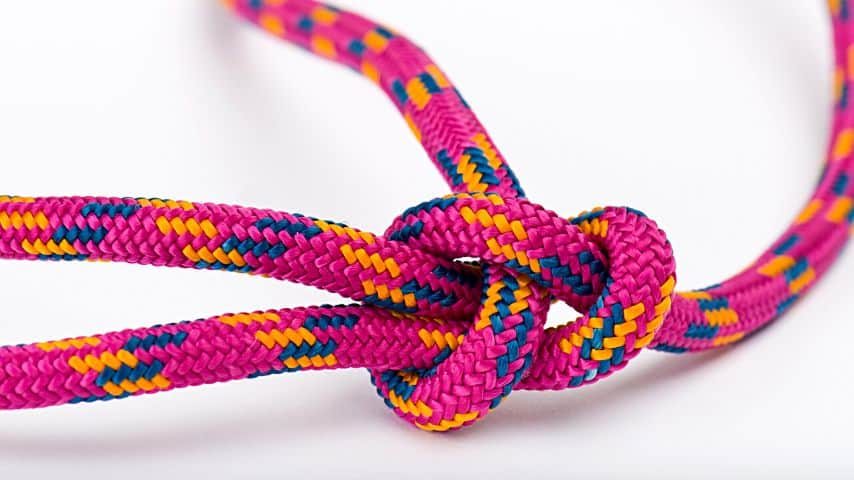
This knot was traditionally used in sailing activities.
Different rope types are tied together by this knot. Sailors used it for tying cords of other materials.
4. Clove Hitch
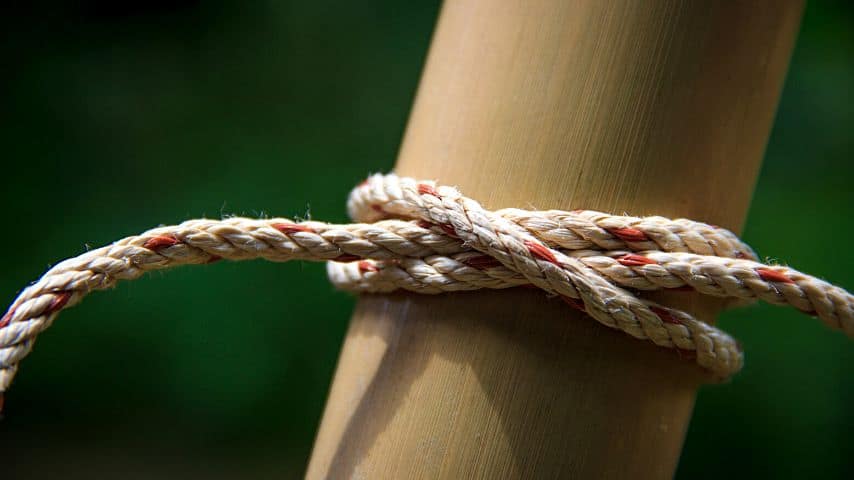
This type of knot is used for adjusting or securing rope for future use.
This knot is useful for connecting two poles apart together.
5. Two Half Hitch
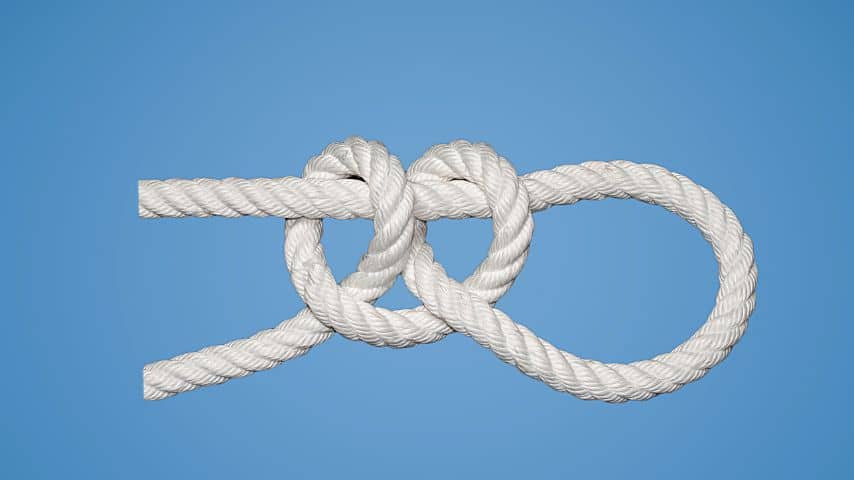
This knot is used to secure the line or rope between the already tied knots.
One can easily tighten or lose this type of knot depending upon the situation.
Generally, it is used to bind the two ends of the knots.
6. Taut Line
It is an adjustable loop knot. This type of knot can also be loosened or tightened easily.
It is used for lines under tension.
Characteristics of the Best Rope for Practicing Knots
Based on what’s discussed earlier, we can say that there are different ropes and various knots.
The selection of the best suitable rope for knotting depends upon the need and situation. It’s safe to say that each situation requires a specific rope and a specific type of knot.
Moreover, the activity determines the best rope for practicing the knot as per the need of the hour.
Let us figure out the best possible characteristics that apply to the best rope for practicing knots.
1. Technical Analysis
It is important to assess the need for rope and knot technically.
It’ll give a clear picture of what should be chosen.
2. Thickness
The thickness determination of rope is essential for tying a good knot.
The standard thickness of a rope must be approximately 6 mm to 12 mm.
3. Texture
The texture of the rope plays an integral part in tying knots.
The rope must be flexible and not so shiny or slippery. Slippery ropes may loosen the tied knots.
4. Fiber Nature
The rope must be polyethylene or polyester for the best tying of knots.
Nylon ropes are considered to provide the strongest knots.
5. Durability
The durability of rope is essential for assessing the strength of the knot. The more robust and durable a rope, the stronger the knot is.
The durability of nylon and polyester ropes is much higher than cotton or jute ropes.
6. Water Resistance
High water-resistant ropes give a well-tied knot.
Water absorption may shrink the actual size of the rope, this will eventually affect the tied knots.
So, the water-resistant rope is the best choice if rain or water comes into play.
7. Strength
The strength of a rope is the strength of the tensile properties of the rope. It refers to the strength up to which the rope can hold and does not break.
A high tensile strength rope may be best for a knot when a heavy load is considered.
Frequently Asked Questions about the Best Rope for Practicing Knots
On what factor does the strength of the rope depend?
The strength of the rope depends upon the tensile properties. The stronger the tensile limit, the more the rope strength and durability will be.
What do you mean by the water resistance in a good rope?
The water-resistance of a rope is its tendency not to absorb water or moisture. Moisture weakens the rope and affects the strength and durability of knots.
Which is the weakest knot type?
The clove hitch is the weakest of all knot types. This is because the clove hitch does not work for weak tensile ropes.
In which case is nylon rope the best option?
Nylon rope is known for its strength and capability of pulling heavy objects. Therefore, Nylon rope is the best option in case of bearing heavy loads.
